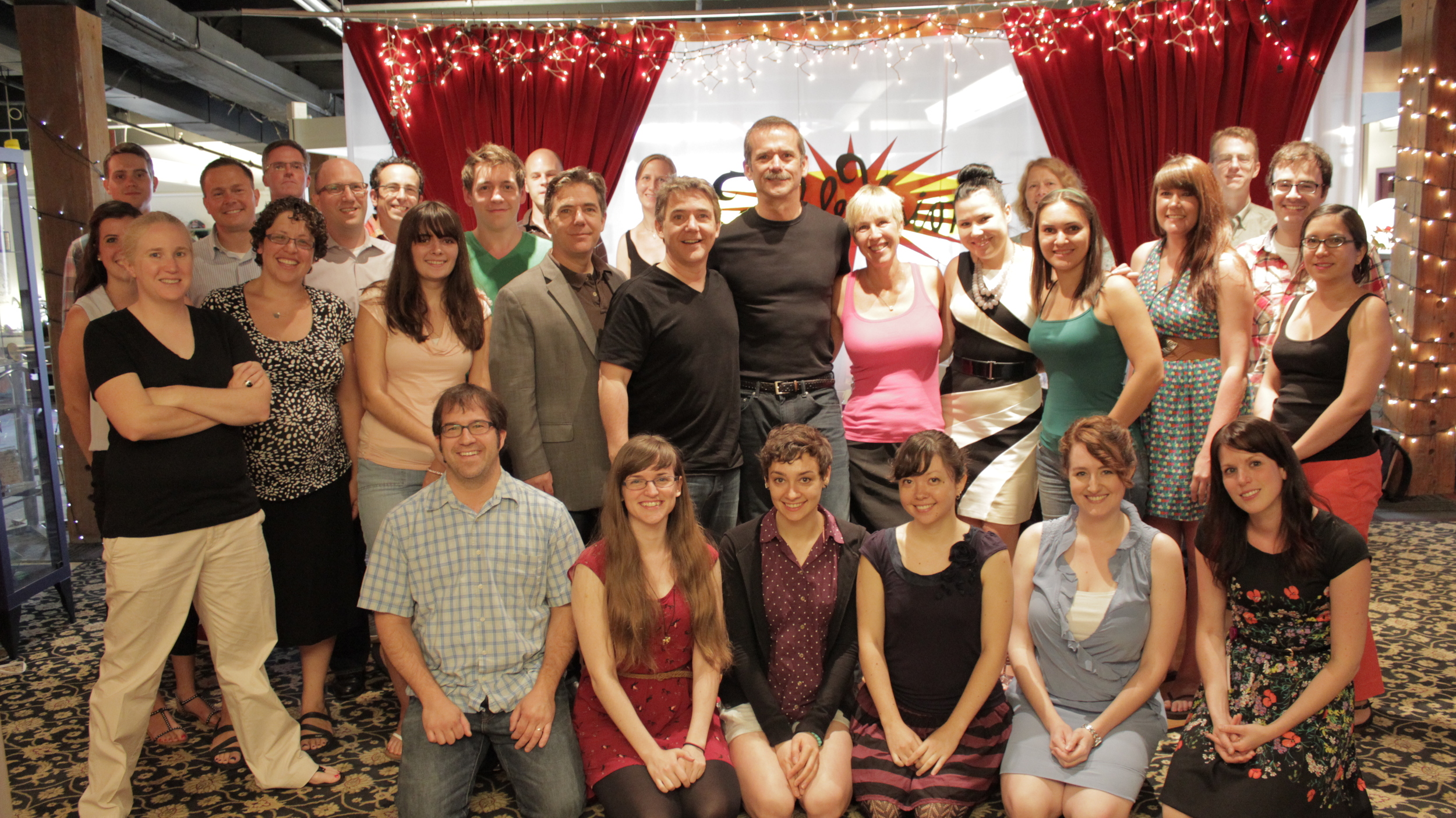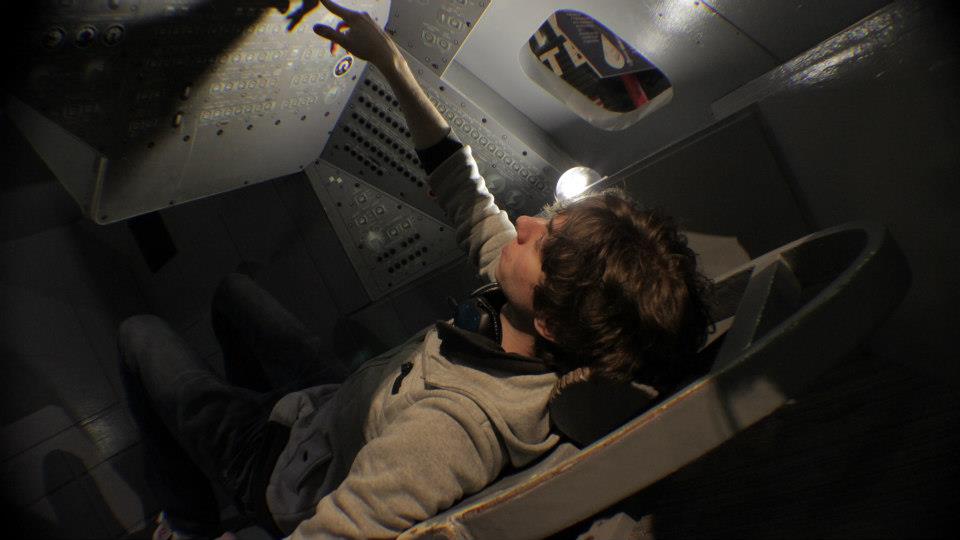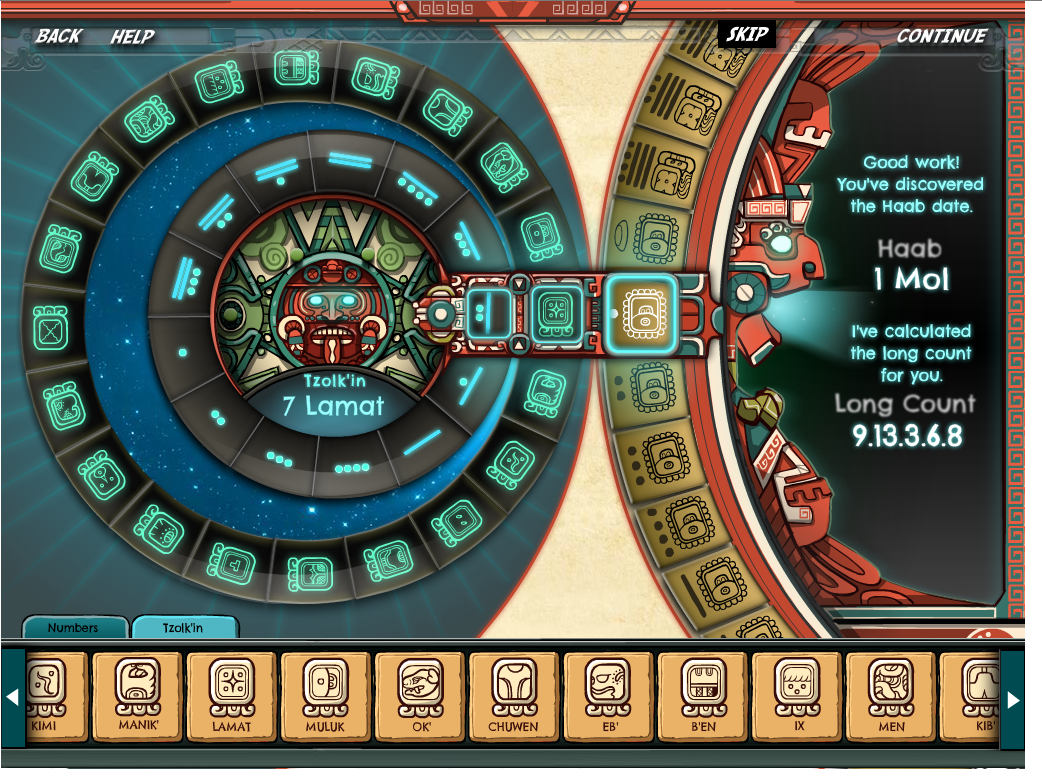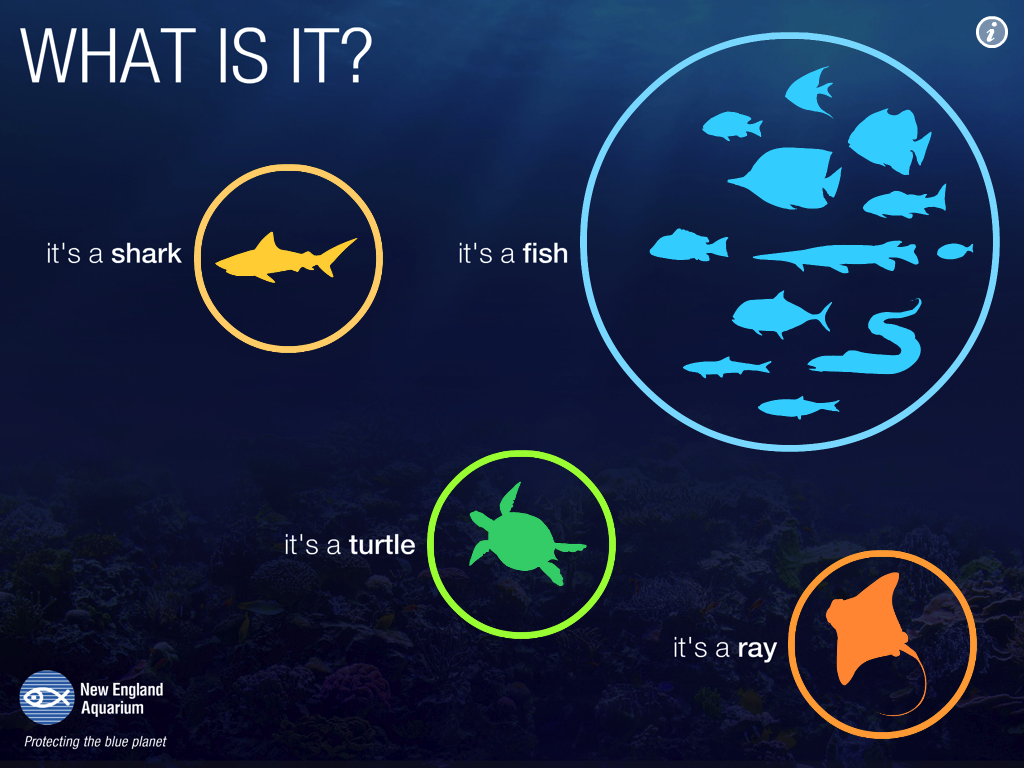Post written by FableVisionaries Taryn Johnson, Hannah O'Neal, Jordan Persson

Hannah:
FableVision Studios was honored to have Commander Chris Hadfield and his lovely wife Helene in the studio last week. Chris Hadfield was the Commander of the International Space Station for expedition 35. He was the first Canadian to Command an ISS expedition, and spent nearly six months aboard the ISS. While traveling in low-earth orbit, he achieved a remarkable level of international popularity through social media. Commander Hadfield was tweeting, and streaming, and sharing as much as he could of his experience with the world below. His "Space Oddity" video has been viewed more than 100,000,000 times since its posting back in May on various social media feeds.
This video is only one of many. Commander Hadfield inspired many people throughout the world to see the earth "without borders" like he has. Chris Hadfield safely landed on earth via the Soyuz Spacecraft on May 13, 2013. Chris Hadfield retired from the Canadian Space Agency as of July 3, 2013. He now has a new mission that he came to speak to FableVision and our founder Peter H. Reynolds about. When Chris wanted to become an astronaut, he had to lot to learn, but that information wasn't readily available to him. The challenge? How do we help kids become what they want so they don't get discouraged?
There's a lot of overlap here with Peter's book The North Star, which touches on finding your true potential and helping people make the future they want for themselves. Chris wants kids to enjoy the journey of making their dreams happen -- the focus and hard work, or "hard fun" as he calls it. We're looking forward to creative collaborations to come with Commander Hadfield! Many thanks to him for visiting. You can read more about his visit to FableVision Studios from these great articles in Boston Magazine and the Boston Herald.
Jordan:
As a kid, like so many others, I was fascinated by outer space. I launched model rockets and loved spending time in the Boston Museum of Science's crawl-in Apollo capsule. Time passed and that fascination never diminished -- I started listening to David Bowie, wrote a few songs about space of my own, and at the age of 24, glued NASA patches onto my sneakers. I'm thrilled, though not entirely surprised, that Commander Chris Hadfield stopped by the studio to talk with Peter H. Reynolds about ways to combine forces and share the fun of science. Here I am visiting the Museum of Science earlier this year.
Science-related projects are frequent here at FableVision, and with each new project comes something new to learn. For example, I discovered the intricacies of the Mayan calendar while editing dialog in our Mayan Mysteries game for Dig-It! Games. I'm looking forward to everything we learn from collaborating with Commander Hadfield in the future!
Taryn:
Our interest in science at FableVision expands beyond space and astronomy. Many of us find special fascination with other scientific topics, such as dinosaurs, evolution, marine biology, and physics. The projects where we work creatively to share scientific knowledge in ways that excite interest and encourage further learning are where FableVision shines. Our collaboration with the New England Aquarium is a great example. The goal was to introduce scientific terms and fish species to the visitors, but how could we present this information in a way that would be equally aesthetically pleasing and informative? You can read more about the project here.
Many of us took a special interest in some projects relating to evolution as well. For the Denver Museum of Nature and Science, FableVision created an interactive that helped simplify Darwinian concepts. Visitors are able to travel to virtual islands to measure the beaks of finches over time. They can then record and analyze data the same way a scientist would, to better understand natural selection. We've also made animations on human evolution for the New York Hall of Science’s Evolution-Health Connection exhibit, which highlighted the development of common modern day traits such as lactose intolerance, back pain, sunburns, and obesity. You can read more about the project here.
Animation and interactivity can be used to help make science topics more accessible and engaging. We want to share our love of science with others, and spark excitement about the things that captivate us. And hopefully, create a few more future scientists along the way.





